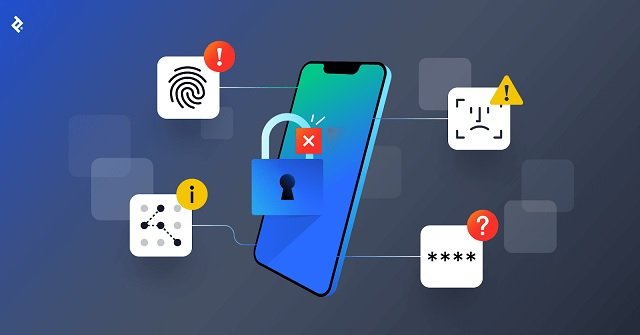Companies striving to succeed in our digital-first world need to present the same user experience across multiple devices. With mobile devices now making up over half of web traffic, developers need to focus on validation methods that work well for mobile devices.
Mobile friendly tests help ensure that websites perform optimally across various screen sizes. Evaluating what users type in helps create a better user experience while protecting security and reducing mistakes. Here, we review different ways to validate mobile input while expanding user satisfaction without losing application benefits.
Why Mobile-Friendly Validation Matters
Before diving into techniques, it’s essential to understand the significance of mobile-friendly validation:
- User Experience (UX): Mobile users demand quick and seamless interactions. High desertion rates and frustration can result from inadequate validation.
- Accessibility: Your app or website supports everyone, including disabled users, when you create designs that work for everyone.
- Conversion Rates: Users prefer validation that goes smoothly to reduce the difficulty of completing tasks, thus driving more sales.
- Error Reduction: Accurate validation reduces the risk of errors that can compromise functionality or security.
Principles of Mobile-Friendly Validation
To design validation processes that cater to mobile users, follow these core principles:
- Simplicity: Keep forms concise. Use only necessary fields to reduce cognitive load and interaction time.
- Real-Time Feedback: Give users immediate validation for inputs, including passwords or email addresses, to prevent problems after submission.
- Accessibility: Make sure validation complies with WCAG requirements and functions flawlessly with assistive technology.
- Error Clarity: Use clear, actionable error messages to guide users in correcting mistakes.
- Responsive Design: Optimize forms and validation elements for various screen sizes and orientations.
Mobile-Friendly Validation Techniques
Mobile-friendly validation ensures that a website or web application works effectively on mobile devices, providing an optimal user experience. Here are some techniques to validate the mobile-friendliness of your website or application:
- Client-Side Validation
Before data reaches the server the user’s browser runs basic input tests first. Users can spot mistakes right away because the system shows feedback instantly.
Advantages:
- It reduces server load.
- It offers instant feedback.
Best Practices:
- Your app should use HTML5 input types email, tel, and number because they provide instant validation rules.
- Choose from the available JavaScript frameworks React, Angular, and Vue to create real-time validation features.
- Ensure fallback mechanisms for browsers that don’t support certain features.
- Server-Side Validation
Server-side validation is performed after the data is submitted. It’s a critical layer of validation to ensure data integrity and security.
Advantages:
- It enhances security by validating data independently of the client.
- It ensures compatibility across devices and browsers.
Best Practices:
- Put your server framework to work (choose from Django, Laravel, or Node.js) for better input processing.
- To provide stronger protection, add both form checks on the server and the user’s device.
- Real-Time Validation
The system shows users errors while they type information into the form. When users type an invalid email address, they get instant notification about the error.
Advantages:
- It reduces errors and resubmissions.
- It improves the overall user experience.
Implementation Tips:
- Validate fields individually as users type.
- Use subtle animations or color changes to indicate valid/invalid inputs.
- Avoid intrusive notifications; keep messages concise and informative.
- Error Messaging
Unclear error messages produce user confusion and reduce their motivation to complete tasks. The validation system on mobile should show plain and helpful messages about errors directly in front of users.
Best Practices:
- One must place error messages close to the relevant input field.
- One should use simple language (e.g., “Enter a valid email address” instead of “Email format incorrect”).
- You should highlight errors with contrasting colors and symbols.
- One must try to avoid technical jargon and use user-friendly terms.
- Input Constraints
By restricting inputs to acceptable formats, you can prevent invalid entries and improve data quality.
Techniques:
- Use placeholder text to provide input examples (e.g., “DD/MM/YYYY”).
- Implement character limits for text fields.
- Enable numeric keypads for fields requiring numerical input.
- Use dropdowns or predefined options to limit user choices.
- Progressive Disclosure
To avoid overwhelming users, reveal form fields and validation messages incrementally.
Implementation Tips:
- Start with essential fields and expand as needed.
- Use collapsible sections for optional inputs.
- Display tooltips for additional context without cluttering the UI.
- Responsive Design for Forms
Responsive design ensures forms and validation messages adapt to various screen sizes and orientations.
Best Practices:
- Use flexible grids and CSS media queries.
- Test forms on multiple devices and browsers.
- Optimize touch targets for ease of interaction.
- Assistive Technology Support
Accessibility is a critical aspect of mobile-friendly validation.
Best Practices:
- Web content gains more accessibility by adding ARIA terms to web elements.
- Help assistive tools detect and tell users about errors they make.
- Provide keyboard navigation for all form elements.
- Security-Focused Validation
Validation should not only enhance usability but also protect against security threats.
Best Practices:
- Sanitize inputs to prevent SQL injection and XSS attacks.
- Implement CAPTCHA to prevent bot submissions.
- Encrypt sensitive data during transmission.
Advanced Techniques for Enhancing Validation
Validation plays a crucial role in system security by protecting database contents while keeping data aligned with business practices. Enhanced validation methods must exist as systems expand in complexity to guarantee dependable system performance. These methods advance modern system validations for better performance.
- Context-Aware Validation
Context-aware validation dynamically adjusts validation rules based on the context in which the data is processed. For example:
- User Role-Based Validation: Apply different rules for administrators versus regular users.
- Geographic Context: Enforce specific validation based on local regulations or formatting standards (e.g., phone numbers or postal codes).
- Machine Learning for Anomaly Detection
Machine learning validation methods uncover complex patterns and contradictions during system processes that rule-based systems cannot find. For example:
- Train a model on historical data to flag outliers or unusual patterns.
- Use clustering algorithms to identify data points that don’t fit into expected groups.
- Cross-Field and Cross-Record Validation
Cross-validation ensures consistency between related fields or records. Examples include:
- Field Dependencies: If a start date is provided, the end date must be after the start date.
- Record-Level Consistency: Validate that no two users share the same unique identifier, such as an email address.
- Real-Time Feedback Mechanisms
Providing immediate feedback to users during data entry can improve accuracy and reduce errors. Techniques include:
- Inline validation in forms that dynamically update as users type.
- Predictive suggestions or corrections based on partial input.
- Regular Expressions (RegEx) for Complex Patterns
Using RegEx allows for precise pattern matching, which is especially useful for validating structured data, such as:
- Email addresses.
- Phone numbers.
- Alphanumeric codes with specific formats.
- Validation Against External Sources
Cross-checking data with external authoritative sources can improve accuracy. Examples include:
- Validating addresses using a geographic information system (GIS).
- Checking financial data against banking APIs or tax systems.
- Implementing Soft and Hard Validation Rules
Not all validation rules need to block the submission of data. Implementing soft and hard rules can provide flexibility:
- Hard Rules: Critical validations that prevent submission until resolved.
- Soft Rules: Warnings or suggestions that allow submission but flag potential issues.
- Versioned Validation Rules
In systems with evolving requirements, maintain versioned validation rules to handle legacy data and new entries differently. This approach:
- It ensures backward compatibility.
- It facilitates smooth transitions during system updates.
- Data Profiling and Statistical Validation
Leverage data profiling techniques to understand the distribution, patterns, and trends within datasets:
- Identify outliers based on statistical thresholds.
- Validate consistency with historical averages or medians.
- Validation in Distributed Systems
In distributed systems, ensuring consistent validation across services is challenging. Techniques include:
- Centralized validation services that provide a single source of truth.
- Schema validation tools like JSON Schema or Protocol Buffers to enforce consistency across APIs.
Testing and Optimization
Regular testing is essential to ensure the effectiveness of validation techniques:
Cross-Browser Testing:
Cross-browser testing makes sure websites and applications work perfectly on all browsers and devices to help users access content without problems.
With AI-driven platforms like LambdaTest, developers and testers gain access to a powerful testing service that lets them test websites on more than 3000 unique browsers and devices. Through extensive tests, this platform detects browser compatibility issues and resolves them promptly to create a smooth user interface experience.
By leveraging tools like LambdaTest, teams can streamline their testing processes and maintain high-quality standards in web and mobile development. Additionally, utilizing a responsive checker ensures that websites adapt seamlessly to various screen sizes, optimizing the user experience across all devices.
Device Testing:
Test on various devices and screen sizes to ensure a consistent user experience. It includes both physical devices and emulators for popular screen resolutions and operating systems. It’s also crucial to verify that touch interactions, button placements, and navigation elements work properly across device types, including mobile, tablets, and desktops. Cross-browser testing should also be part of this process to ensure compatibility with different web browsers. Tools like LambdaTest can instantly help test your digital product on real devices to make sure it behaves properly across devices with different screen sizes and OS.
Usability Testing:
Gather user feedback to identify pain points and areas for improvement. Conduct sessions with diverse user groups to cover a broad range of perspectives and ensure accessibility for all. It can involve both moderated and unmoderated testing methods, allowing users to interact with the product in a natural environment. By analyzing behavioral patterns, heatmaps, and session recordings, you can gain valuable insights into improving user flows and simplifying the user interface.
Performance Monitoring:
Use tools that can help you to analyze load times and responsiveness. Regularly review key performance metrics such as time to first byte (TTFB), speed index, and interaction readiness to maintain optimal performance. One should set up ongoing monitoring to catch any performance regressions during updates. Additionally, consider using Real User Monitoring (RUM) tools to capture performance data from actual users and understand how performance varies across geographic regions and device types.
Security Testing:
To keep user trust strong and safeguard important information, website and application security needs maintenance. Multiple security scans detect weak points in your system, including SQL injection faults and cross-site scripting attacks. The combination of security evaluation methods detects security issues more effectively than individual assessment techniques. One must track security patches both for dependent software and the platforms they run on. Teams can improve system safety by adding security testing during product development stages to stop threats from causing harm. Daily security tests and system reviews help strengthen the security of your product.
In Conclusion
Mobile-friendly validation is not simply a technical necessity—it is a cornerstone of delivering excellent user experiences in today’s mobile-first environment. By using the appropriate methods, developers may produce user interfaces that are safe, easy to use, and accessible on a variety of devices.
Effective validation procedures are built on the tenets of accessibility, real-time feedback, simplicity, and error clarity. Whether it’s through flexible design, modern technologies like machine learning, or rigorous testing processes, applying robust validation strategies helps reduce errors, boost user pleasure, and ultimately drive commercial success.
Maintaining a user-first strategy in mobile validation will remain crucial as the digital landscape changes in order to gain a competitive advantage, retain users, and foster trust. Businesses can build seamless experiences that satisfy the demands of an audience that is becoming more mobile-savvy and connected by giving mobile-friendly validation top priority.



